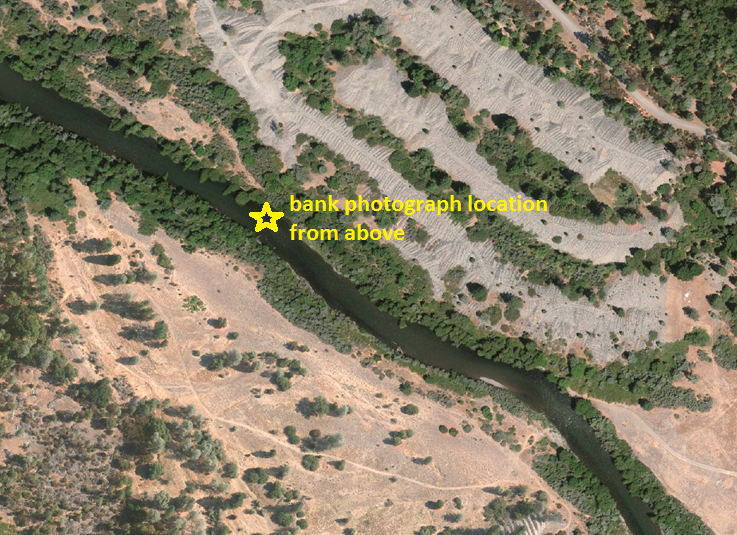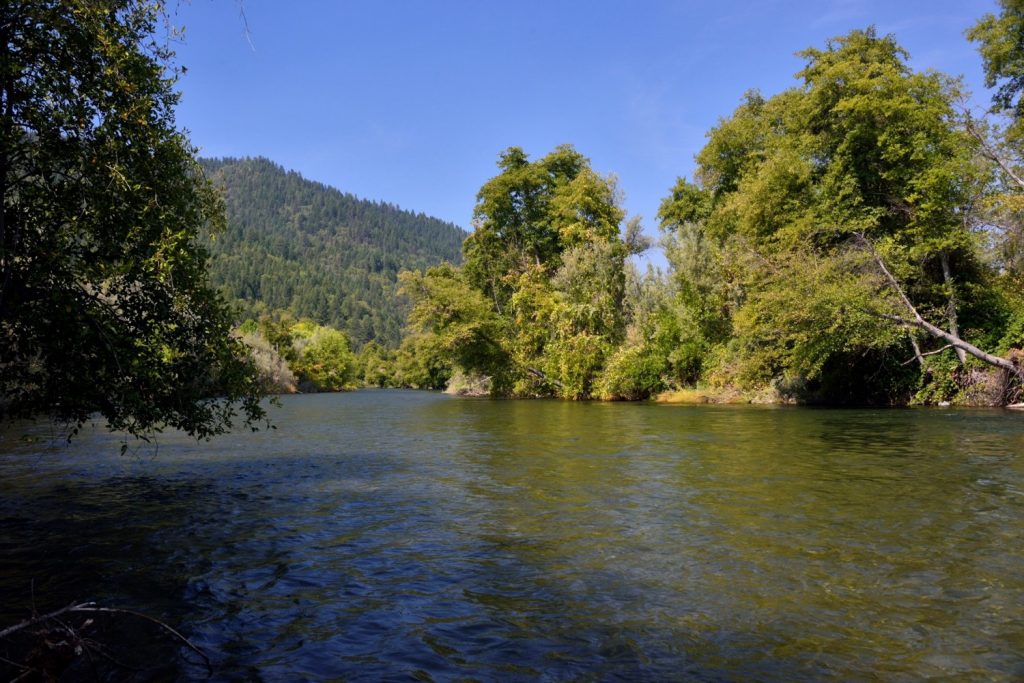Given a chance, nature will heal itself…
Historic mining in Trinity County deeply wounded the river. The scale of mining destruction was so vast that entire sections of the river’s path through the valley were lost. Yet, the restorative power of floods was helping nature recover from mining impacts.
A large flood in 1956 began to reform a portion of the sediment debris dumped into the river channel from hydraulic mining and turned over again by massive mining dredges. Then in 1960, Trinity Dam began holding water back. Floods approaching 100,000 cfs at Lewiston, and even higher downriver, were no longer possible.
Trinity Dam, in conjunction with Lewiston Dam below it, severed nature’s mechanism for healing the river and the valley ecosystem: Floods
Salmon and steelhead, as evidenced by challenges overcome during a normal life cycle, are incredibly resilient organisms. However, salmon were unable to adapt to the dramatic and rapid changes caused by the reduced flows.
Lacking restorative floods, sand covered the gravel spawning beds that spawning salmon depend on. The river settled into a narrow, straight channel. Young fish could no longer access productive floodplain habitats. Willows and alders grew thickly along the low-flow water’s edge.
Although beautiful to the human eye, the unnaturally dense riparian vegetation limited salmon productivity by eliminating habitat, often hiding the steep and unproductive mine tailings piles left behind.

Aerial photography of the Trinity River in 2014 shows densely vegetated river banks and historic mine tailings.
TRRP’s mission is to allow nature a chance to heal itself.
Our primary method is through returning more flows to the river. We cannot return natural floods to their pre-dam levels because communities have developed homes on historic floodplains. However, flows up 11,000 cfs can be scheduled to help restore more natural processes to the river. Within just a few years of restoration flows, much of the sand choking spawning habitats was cleared and continues to be kept at more appropriate levels.
The second restoration method is our Channel Rehabilitation, which reforms the channel by altering the banks, reconnecting the river to its floodplains, and, in some cases, lowering and vegetating old mine tailings. These projects may look messy, but revive the opportunity for nature to heal itself by creating channel that fits the river’s regulated flows released from the dams. Channel manipulations and large wood structures work with flows to encourage channel diversity that promotes ecological function and increases habitat for young salmon. Constructed side channels and floodplain lowering further enhances salmon habitat to help boost the production of young salmon.
Salmon, like all species, are most vulnerable to environmental stressors as juveniles and the Trinity River became a difficult environment for young salmon especially.
In the spirit of encouraging nature to heal itself, the features we construct are expected to sustain for some time, but are not intended to be permanent. Healthy rivers are dynamic and change frequently.
Other restoration efforts include additions of spawning gravels to make up for gravel not washing past the dams, watershed projects outside the river to contribute to reductions of sand and support salmon populations, plus environmental monitoring and scientific studies to track and improve our restoration work.
This page gives a broad overview of TRRP restoration; more details are given on pages for each of TRRP’s restoration activities.
RESTORATION PAGES
Science and Adaptive Management

